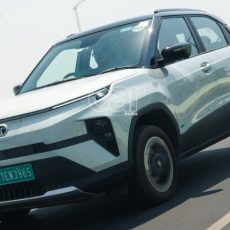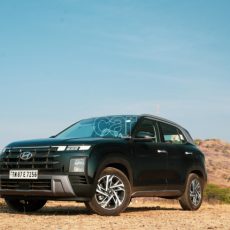The MG Astor has been in the news for a while for its impressive list of features. Now, after a session at the Buddh International Circuit (BIC), we know how it drives.
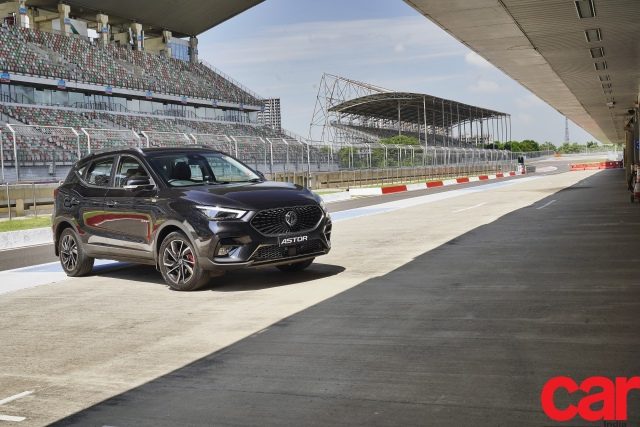
Story: Joshua Varghese
Photography: Sanjay Raikar
Before the first drive at the Buddh International Circuit (BIC), the MG Astor generated a lot of interest on account of its good looks and long list of features; almost like a new celebrity in the car world. All this publicity gave rise to considerable curiosity among consumers about the Astor’s début and it has a lot to live up to because it is placed in the mid-size SUV segment — a space that is already well-contested and saturated by the likes of the Hyundai Creta, Kia Seltos, Škoda Kushaq, and Volkswagen Taigun.
To make a lasting first impression, MG roped in the brightest talent from their London-based design team to work on the Astor and that explains its instant visual appeal. They claim that they have styled the car with the philosophy of “emotional dynamism” and it does have a soft yet sophisticated air about it. The massive celestial grille is the most dominant feature of the car and it displays a sense of depth along with style. Their attention to detail is further seen in the intricate elements of the LED headlamp and tail-lamp units, a departure from the rather functional styling we have become used to in most SUVs. Unlike the others in the segment, MG have chosen to give the Astor a design that is more subtly sporty than muscular and, with the swooping roof and shoulder-line, they have managed to strike a good balance between both.
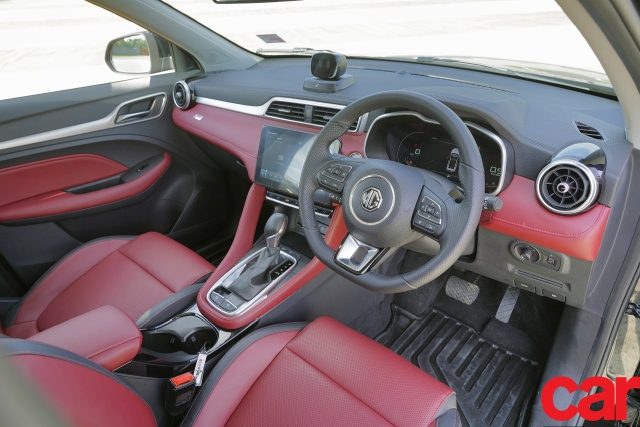
Similar taste and focus are carried on in the interior of the car as well, especially in the Sangria Red theme. Generous use of leatherette and soft-touch materials made the cabin of the Astor feel particularly premium and welcoming right from the moment I settled into the comfortable seat. Regardless of being in the driver’s seat or otherwise, this is a cabin that you would want to be in. As a rear passenger, the room is more adequate than generous, seating two in comfort and three within reason. The wide glass area along with the panoramic sunroof and rear a-c vents make this a nice place to be; maybe, even for long drives. The driver is greeted by a well-shaped, flat-bottomed steering wheel and a seven-inch LCD instrument cluster, well laid out with the essential information and the ADAS alerts. Meanwhile, a 10.1-inch touchscreen infotainment system dominates the centre console and, along with the small personal assistant perched on the dashboard, offers a wide range of entertainment and smart connectivity options. These include JioSaavn music, MapMyIndia navigation, Park+, and Koinearth, to name a few.
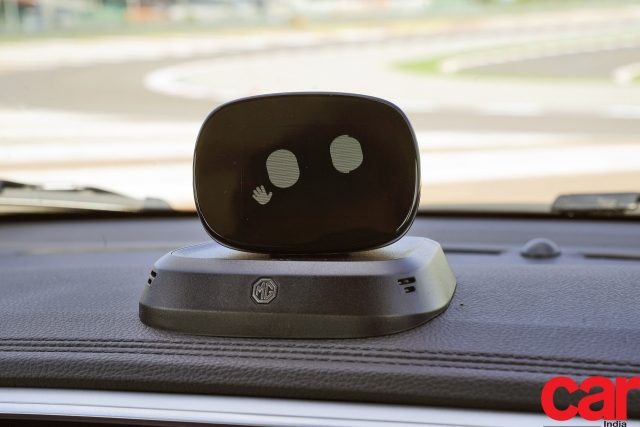
The AI reminds me of the small robot from the Wall-E movie and this cute gadget’s capabilities include providing entertainment on demand along with information and news from Wikipedia and the internet. It is heavily dependent on the Jio mobile network in the region and since that was rather weak at the BIC, the AI was not at its brightest and found itself limited to the pre-programmed features such as physical controls of the car.

Under all the glamour lies a 1.4-litre (1,349-cc), three-cylinder, turbo-petrol Brit Dynamic 220 engine and it makes, predictably, 220 Nm of torque and 140 hp. The entry-level model is offered with a 1.5-litre engine (with the choice of manual or CVT) but we did not get to see that one at all. The turbo-petrol engine fires up without fuss and settles into a quiet idle with almost none of the triple-cylinder vibes creeping into the opulent cabin. My first drive experience of the Astor began with a few laps around the racetrack.
Having set the steering into Dynamic mode and flicked the six-speed auto into Sport, I eased the Astor out on to the track and, after a quick warm-up lap, floored the accelerator to see what the car had in store. A sporty soundtrack complemented the tacho needle as it raced for the red-line with the turbo doing its best. The figure of 60 km/h came and went rather quickly while the race to the 100 km/h-mark did not feel quite as rapid. With the accelerator floored, the Astor struggled to 170 km/h before I had to step on the brakes to take a corner. So far as performance goes, this is certainly not the quickest car around but what it lacked in oomph at the top end of the rev-range it made up for with good handling. The steering response was precise and allowed me to feed in accurate inputs to place the front wheels exactly where I wanted them and the strong mid-range allowed a quick exit as well. With a little more feedback at the steering and brakes and a vigorous top end, the Astor would have been more fun on the track, but the current package promises to be adequate for exciting times on the road, even if that means being sporty without a capital S.
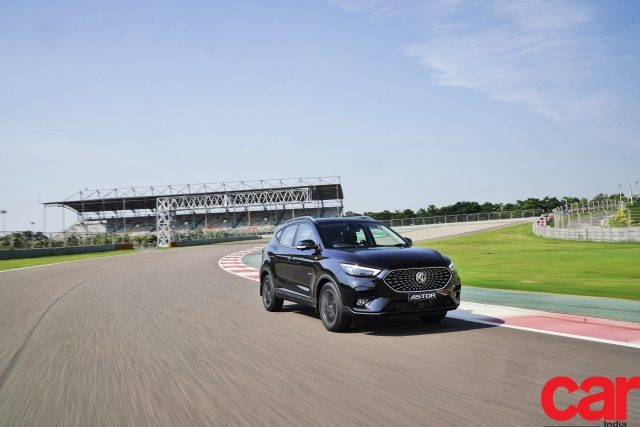
During the track session, I did run over a lot of kerbs at speed and, during our drive around the BIC’s peripheral roads, we tackled a few speed-breakers as well but no rough roads (our country’s most popular variety of tarmac). Even so, I was rather impressed by the car’s ride quality and it shows a lot of potential for our unruly city roads. Although the suspension set-up is slightly on the softer side, body-roll is barely noticeable at regular speeds and its first instance was seen only at speed while cornering on the racetrack. Further analysis shall follow in the road test.
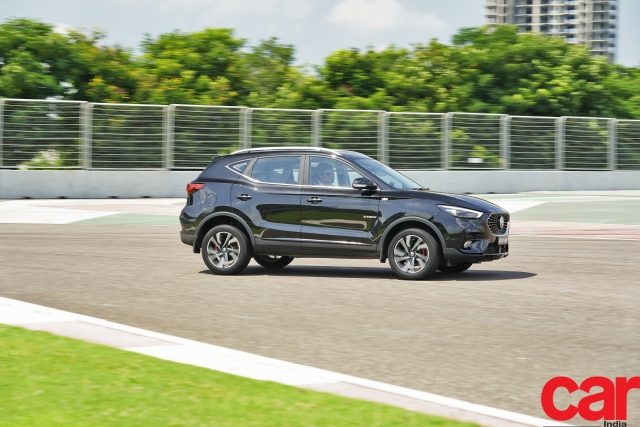
The autonomous features are another highlight of the Astor because it is the only car in this segment to offer Level 2 features. Of these, we got to test lane functions, adaptive cruise control, and speed assist. Of the lot, adaptive cruise control was the most impressive. Five cameras and a radar unit monitor the progress of the car in front and the Astor accelerates and decelerates automatically, even coming to a full stop if needed, with absolutely no effort from my foot. When the car in front moves out of the lane, the Astor speeds up and holds the pre-set speed limit. One shortcoming here is that it does not detect speed humps or potholes, so keep your eyes peeled for those. As for the speed assist system, the cameras scan road signs as you drive by and automatically set the speed limit. Then it does not let the car exceed that limit even if you stand on the accelerator pedal; unless you manually override it, of course. This could save you those expensive photoshoots with the traffic police. The lane functions were the most demanding of the lot because they need perfect road markings and certain radii of lane curvature to work best and these things are rather inconsistent on our roads. No laughing at the back!
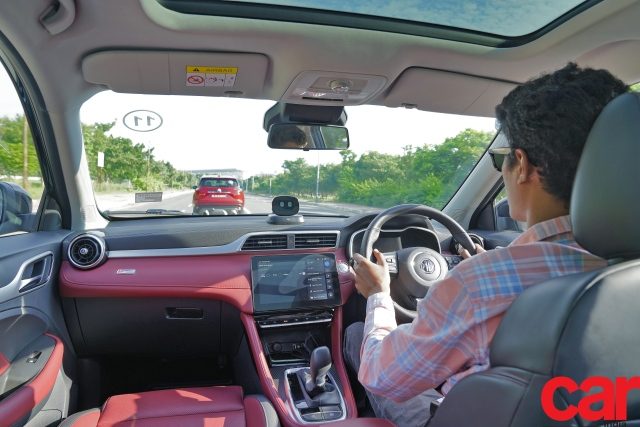
Other useful driver aids include reverse assist, forward collision prevention, and intelligent headlamp control. Imagine reversing out of a tight spot on to a main road, there are many blind spots, even with a reverse camera. The Astor covers these blind spots with sensors and provides alerts on the touchscreen. That is money saved for a new rear quarter panel. Forward collision prevention is quite straightforward. It will alert the driver if it detects a possible frontal collision and will decelerate automatically if the driver does not respond in time; also useful. The best of these is the intelligent headlamp control. MG claim that the Astor will automatically activate and deactivate the high beam by detecting oncoming traffic, keeping fellow motorists from the blinding effects of the LEDs. We cannot wait to test that one out.
Overall, my first impression of the Astor is quite positive because it checks all the right boxes in terms of what a customer would expect of a car in that segment. It shows great promise as a city car and immense potential for comfortable long drives as well. MG have done a good job with the Astor as a package; design, interior, powertrain, autonomous features, and infotainment included. Now it all boils down to the price to decide how it will fare in this cut-throat segment that starts in the region of Rs 10 lakh and goes up to Rs 18 lakh. To be a winner in this segment, this car does need a price tag to match; so, a sticker price of around Rs 18 lakh for the top model would make a lot of sense and an irresistible deal.
Also Read: Volkswagen Vento 1.0 TSI Road Test
Watch the video of the first drive review here:


